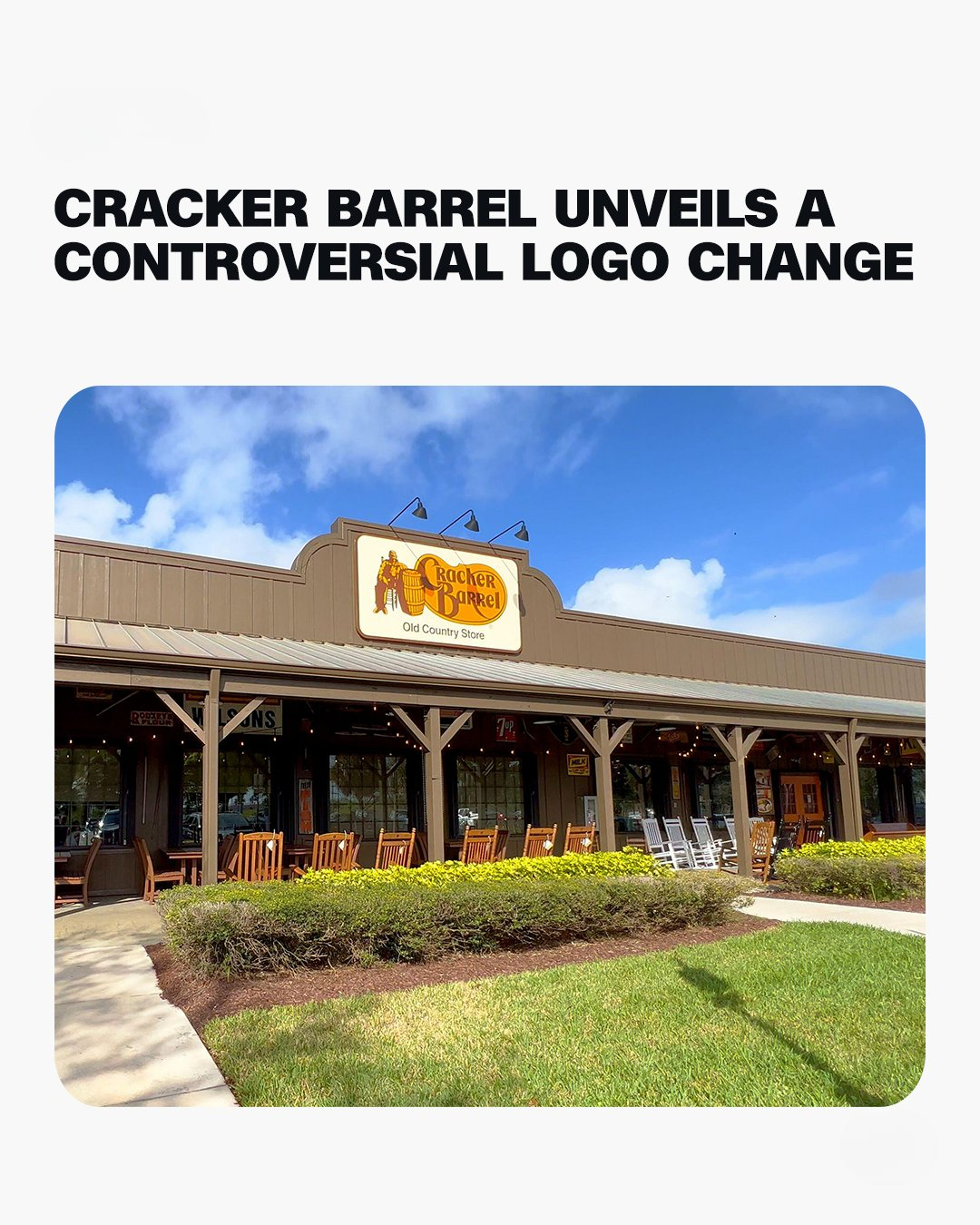Cracker Barrel, the beloved Southern-style restaurant chain, is facing strong criticism after launching a new logo as part of its $700 million makeover plan. Established as a roadside staple since 1969, the company dropped its iconic image of a barrel and a man sitting beside it — symbols it had used since 1977.
Though the company says the updated logo’s design is inspired by the barrel shape, the actual barrel is missing, sparking disappointment among longtime fans. The brand’s history was closely tied to this imagery, representing the gathering spots of general stores decades ago.
After unveiling the new look, Cracker Barrel’s shares fell over 12%, signaling investor worries that the rebrand might drive away loyal customers without attracting enough new ones. The update is more than just a logo change; it includes fresh menus, fall-themed dishes, new commercials, and redesigned restaurant interiors.
CEO Julie Felss Masino emphasized the need to modernize. She explained that their research showed customers wanted a fresher look and feel to keep the brand relevant in today’s competitive casual dining scene. Some locations have already been remodeled with lighter, more modern decor, removing the country-style antiques the brand was known for.
While some patrons appreciate the cleaner look, many expressed displeasure on social media platforms. Viral TikTok videos lamenting the loss of Cracker Barrel’s cozy charm spread widely. On X (formerly Twitter), users complained that changing the logo “feels like another bit of culture dying.” Public figures, including Donald Trump’s son, also criticized the move, fueling heated debate.
Marketing experts warn of potential pitfalls. Babson College’s Anjali Bal noted the risk of alienating devoted customers if the brand mismanages the change. Though Cracker Barrel kept their signature colors, altering a highly recognizable logo can upset loyal fans even if it attracts new customers.
Bal also cautioned that the redesign might dilute the brand’s distinctiveness, and the real challenge will be balancing modernization without losing emotional ties.
Despite the backlash, Masino insists much of the customer feedback has been positive. She believes the updates will help attract younger diners who may not relate to the chain’s nostalgic feel.
Financially, Cracker Barrel faces challenges beyond branding. A recent $5 million loss due to tariffs on imported merchandise hit earnings, although restaurant sales showed modest growth.
The chain must carefully balance its deep-rooted tradition with a need to stay competitive. Change is necessary but carries risks, especially for a brand so closely linked with comfort and nostalgia. Whether the new look will ultimately boost or damage Cracker Barrel’s future remains to be seen.


